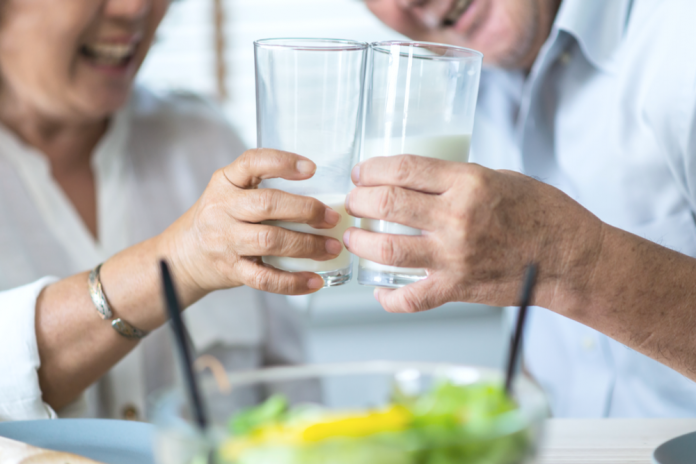Is protein safe for seniors? Absolutely, and it is a vital nutrient for health.
However, protein can be a challenging macronutrient to ensure adequate intake as a senior. This might be due to low appetite, difficulty chewing, among other factors.
Soft, high-protein foods are ideal for seniors who need a boost of protein in their diet. Softer foods tend to be easier to digest and absorb for many older adults.
So if wondering how to add protein into a senior’s diet, read on for some of the best soft protein foods.
High Protein Soft Foods For Elderly
Protein helps the body build tissue and promote healing. The body of a senior needs protein, but sometimes bulky meats make it harder for the body to effectively digest what they ingest. In other words, some senior bodies function better on soft proteins.
Many foods can be puréed or made more mechanically soft for the diets of older adults. While classic protein foods like meat, fish, and poultry can be a great source of protein, they aren’t always soft enough for a senior’s palette.
Other more suitable options include food in the following forms:
- Purée
- Powder
- Butters
- Liquid nutritional supplements
Foods like soups can combine soft food ingredients and make them easier on a senior’s stomach. The following section explores seven of the best soft protein foods for seniors.
Best High Protein Soft Foods
Below identifies some of the best soft protein foods for older adults. Keep in mind that finding fortified sources, such as fortified milk, can help make everything from puddings to purées more nutrient-rich.
Soft, high-protein snack foods and meals can be both appetizing and satisfying.
1. Dairy Products
Milk, cheese, and yogurt products (like Greek yogurt) come in many soft food forms. Dairy provides exceptional animal proteins along with lots of vitamins and minerals that older adults need.
Milk also comes in powdered milk, which can be added to desired consistency. It is also inexpensive and shelf-stable.
Enjoy dairy products in countless ways, including cottage cheese for a protein-packed snack or lightened up lasagna for a balanced meal.
2. Ground Meats
A steak and other cuts of meat are well-known for their significant amount of protein but can be difficult to chew for some older adults. Rather than nix meat altogether, especially since it was a rich protein content with other beneficial nutrients, try ground meats.
Prep ground beef, turkey, chicken, or another preferred variety in batches then use throughout the week. Fill in a burrito, add to pasta dishes like lasagna, toss into soups, and beyond. Season to preference, including lightly with garlic and onion powders or uniquely with Mexican, Indian, Asian flavors, whathaveyou.
3. Beans
Beans and bean purées are an excellent way to add texture and protein to recipes. Not only do they provide protein, but they also come in many varieties so it is easy to experiment.
Add beans to soups, mash onto tacos, sautee in eggs, and much more. Like ground meat, beans can also be seasoned to liking.
4. Nut Butters
Made with nuts and minimal added ingredients, nut butters make it easier to get nutrients thanks to the soft texture. In addition to being rich in “healthy” fats, nut butters offer vitamins and minerals.
Pair peanut butter, almond butter, or another favorite nut butter with fruit, oatmeal, toast, etc.
5. Eggs & Egg Whites
Eggs are underrated as a protein source since they’ve gotten some bad press. Once thought to be too high in cholesterol, recent research has found that eating one egg a day as part of a balanced diet can be perfectly healthy.
Extremely versatile, eggs in almost all of their forms, such as scrambled, fried, or over easy, are great for adding protein.
6. Protein Powders
A simple but effective source, plain protein powder is an easy way to boost protein in liquids, drinks, smoothies, and shakes. There are also many recipes online for adding them to protein bites and even desserts or baked goods.
Whether whey protein or plant-based, protein shakes and supplements can help seniors fill nutritional gaps that might exist.
7. Liquid Nutritional Supplements
Popular protein supplements include brand names like Ensure, Ensure Plus, Boost, and Boost Plus. When possible, consuming plant-based protein powders or homemade shakes is an excellent way to get nutrients.
Luckily, many options are lactose-free, too!
In Summary on Soft Proteins For Seniors
Soft protein foods are a great way for seniors to get protein. Often, older adults need more palatable protein options, and soft protein makes it easier for the body to reap the benefits of food.
From powdered to liquid to puréed proteins, there are many simple and versatile ways to incorporate protein into an elderly diet today.
References:
Dodd K. High Calorie Soft Foods for Weight Gain. The Geriatric Dietitian. Published September 15, 2021. https://thegeriatricdietitian.com/high-calorie-soft-foods/.
Eating Guide for Puréed and Mechanical Soft Diets. Memorial Sloan Kettering Cancer Center. Published April 4, 2018. https://www.mskcc.org/cancer-care/patient-education/pureed-and-mechanical-soft-diets.
Eggs. The Nutrition Source. Harvard TH Chan. https://www.hsph.harvard.edu/nutritionsource/food-features/eggs/.






